Results for "Science Service"
- Blog Post
Science Service, Up Close: Stuff Matters
- Date: September 3, 2015
- Creator: Marcel Chotkowski LaFollette
- Description: Science Service photographs, while having good identifying information, can still be helped by the cybercommunity to fill in some of the mission information.
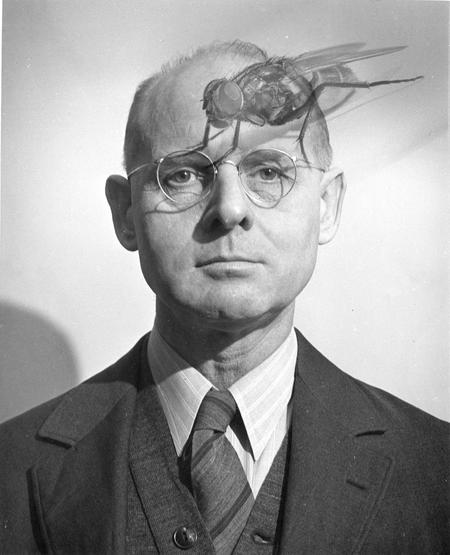
Science Service, Up Close: Laughing All the Way
- Date: April 1, 2015
- Creator: Marcel Chotkowski LaFollette
- Description: Humor and its manifestation at Science Service.
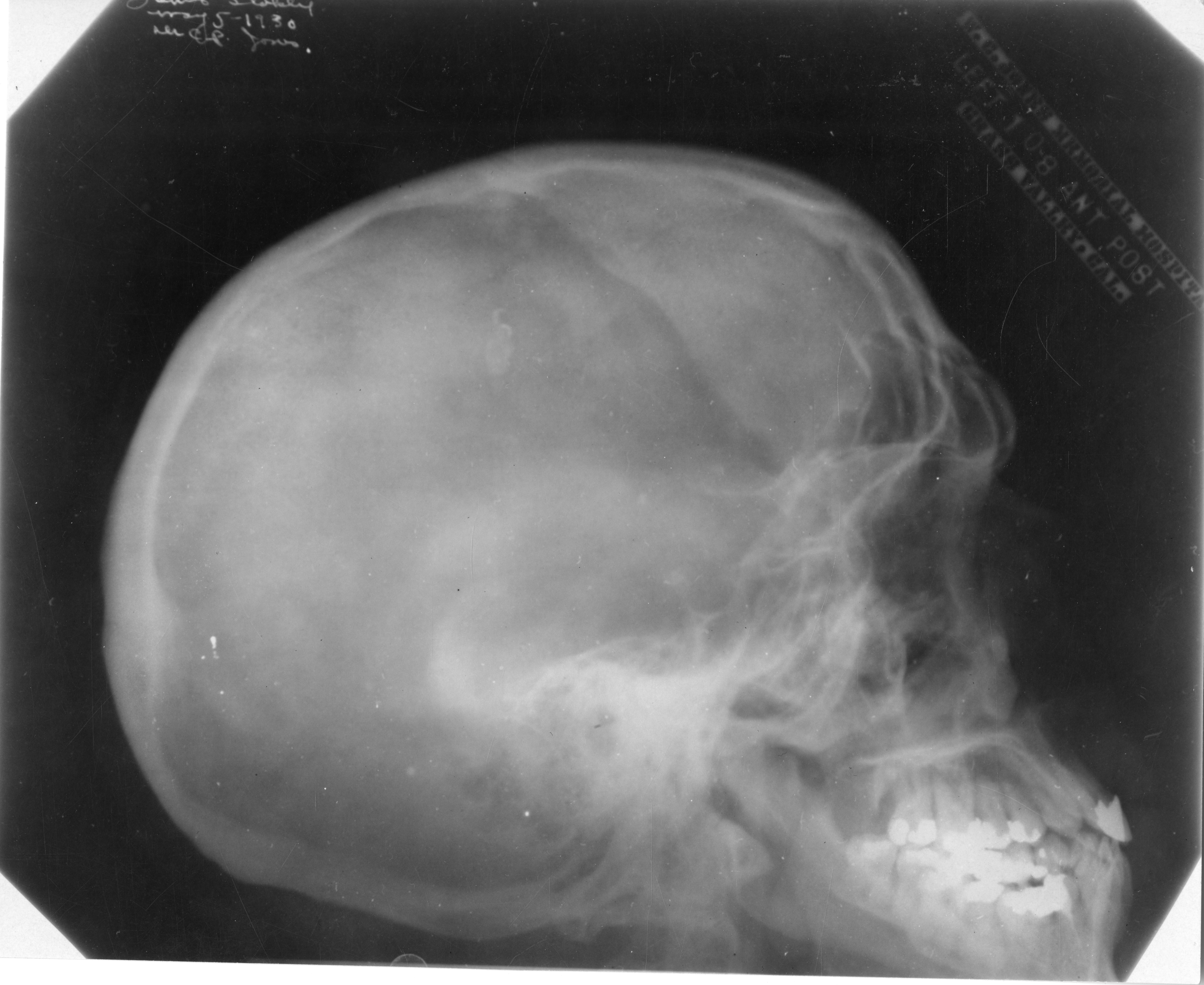
Science Service, Up Close: Covering Eclipses, Near and Far
- Date: August 15, 2017
- Creator: Marcel Chotkowski LaFollette
- Description: Spectacular natural events, like eclipses, have long been the bread-and-butter of science journalism. Science Service, too, succumbed to the lure of combining colorful, firsthand descriptions with technical explanations.
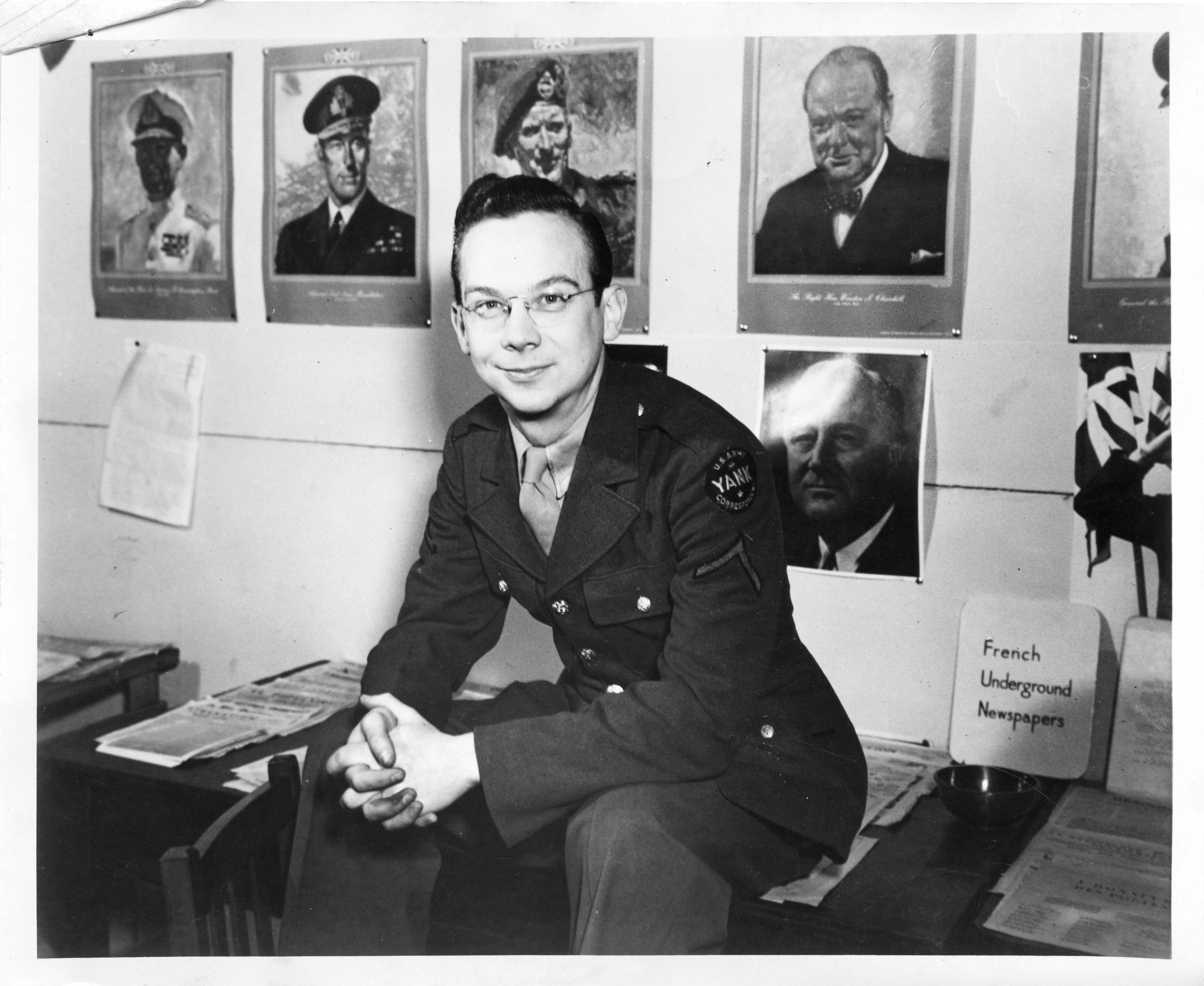
Science Service, Up Close: At the Front - War Correspondents and Cartoonists
- Date: August 27, 2015
- Creator: Marcel Chotkowski LaFollette
- Description: War correspondents and cartoonists amongst the Science Service collections at the Smithsonian Institution Archives.

Science Service, Up Close: Covering the Atom, August 1945
- Date: August 6, 2015
- Creator: Marcel Chotkowski LaFollette
- Description: Details of Helen Miles Davis and Science Service coverage of the atomic bomb.

Science Service, Up Close: Books, Readers, and Recommendations
- Date: December 3, 2015
- Creator: Marcel Chotkowski LaFollette
- Description: Need a new book to read? Look no further than these recommendations from Smithsonian Science Service staff writers during the 1920s and 1930s.

Science Service, Up Close: Science Reporters on the Hunt
- Date: April 18, 2019
- Creator: Marcel Chotkowski LaFollette
- Description: Photographs from the Science Service collections preserve behind-the-scenes glimpses of the newsgathering process for science reporters.

Science Service, Up Close: Lorentz and Einstein, Geneva, 1926
- Date: October 1, 2015
- Creator: Marcel Chotkowski LaFollette
- Description: A previously unpublished photograph, from the Science Service "morgue" files in Accession 90-105, shows two Nobel laureate physicists, Anton Lorentz and Albert Einstein, in 1926.
- Blog Post
Science Service, Up Close: Of Princes, Princesses, and Science
- Date: June 12, 2018
- Creator: Marcel Chotkowski LaFollette
- Description: As editor E. E. Slosson began setting up the Science Service news office, his mail was flooded with inquiries from potential contributors. Writers and photographers described their accomplishments and submitted samples of their work. One such letter, from Albert Harlingue on April 13, 1921, must have piqued Slosson’s interest, for it coincided with the Washington visit of “a
Science Service: Up Close
- Date: May 19, 2015
- Creator: Marcel Chotkowski LaFollette
- Description: Each Smithsonian Institution Archives collection has a life story. That narrative, much like the biography of a person, can explain how a collection's photographs, letters, and documents relate to each other. Closer inspection may also reveal hidden connections to other archival materials and can help in identifying photographers and writers. This new blog series will turn a
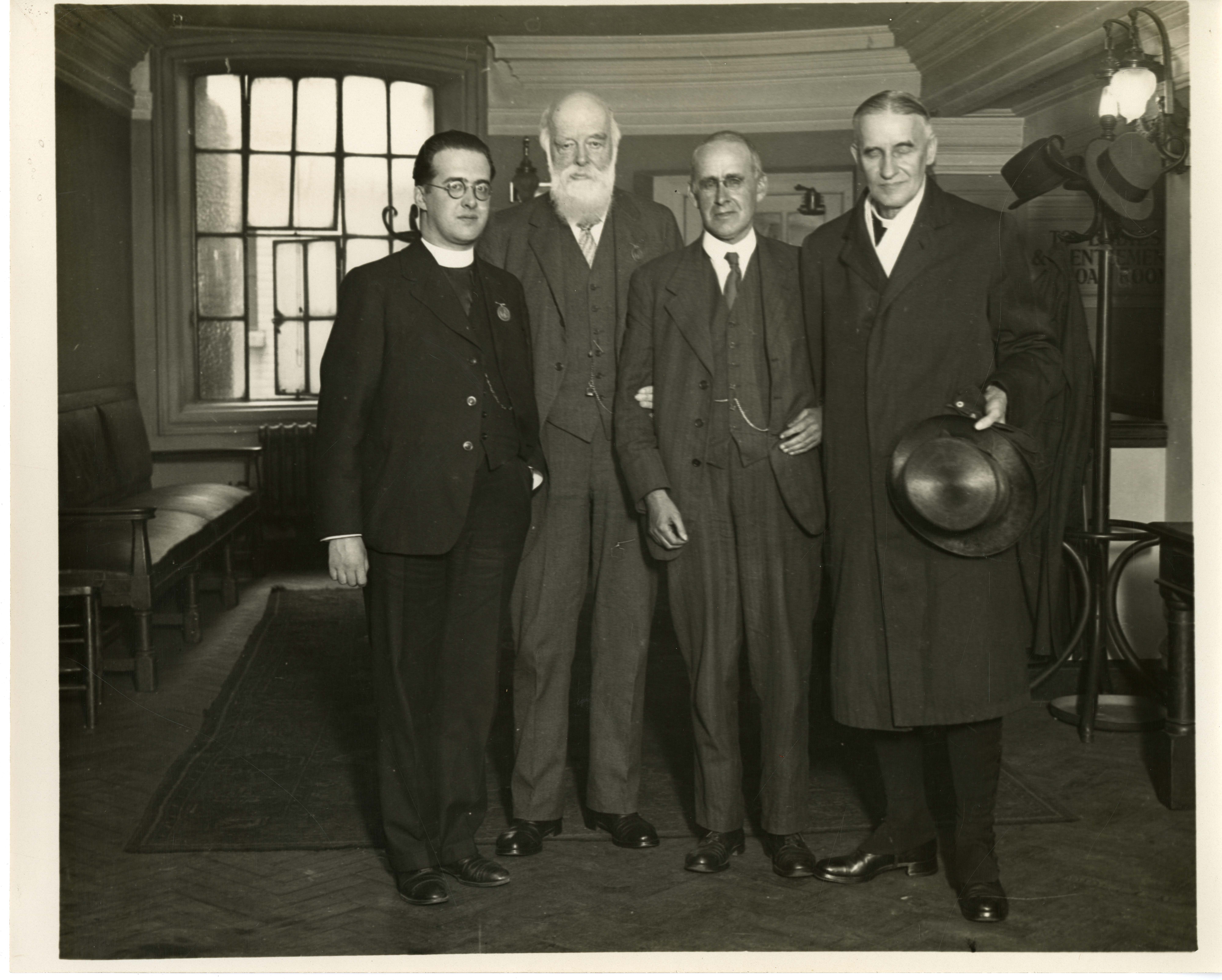
Science Service, Up Close: Considering the Universe
- Date: September 24, 2015
- Creator: Marcel Chotkowski LaFollette
- Description: At a September 27, 1931, symposium about the evolution of the universe, Watson Davis photographed astronomer Abbé Georges Henri Joseph Édouard Lemaître, physicist Sir Oliver Lodge, astrophysicist Edward Arthur Milne, and Anglican bishop and mathematician Ernest William Barnes.
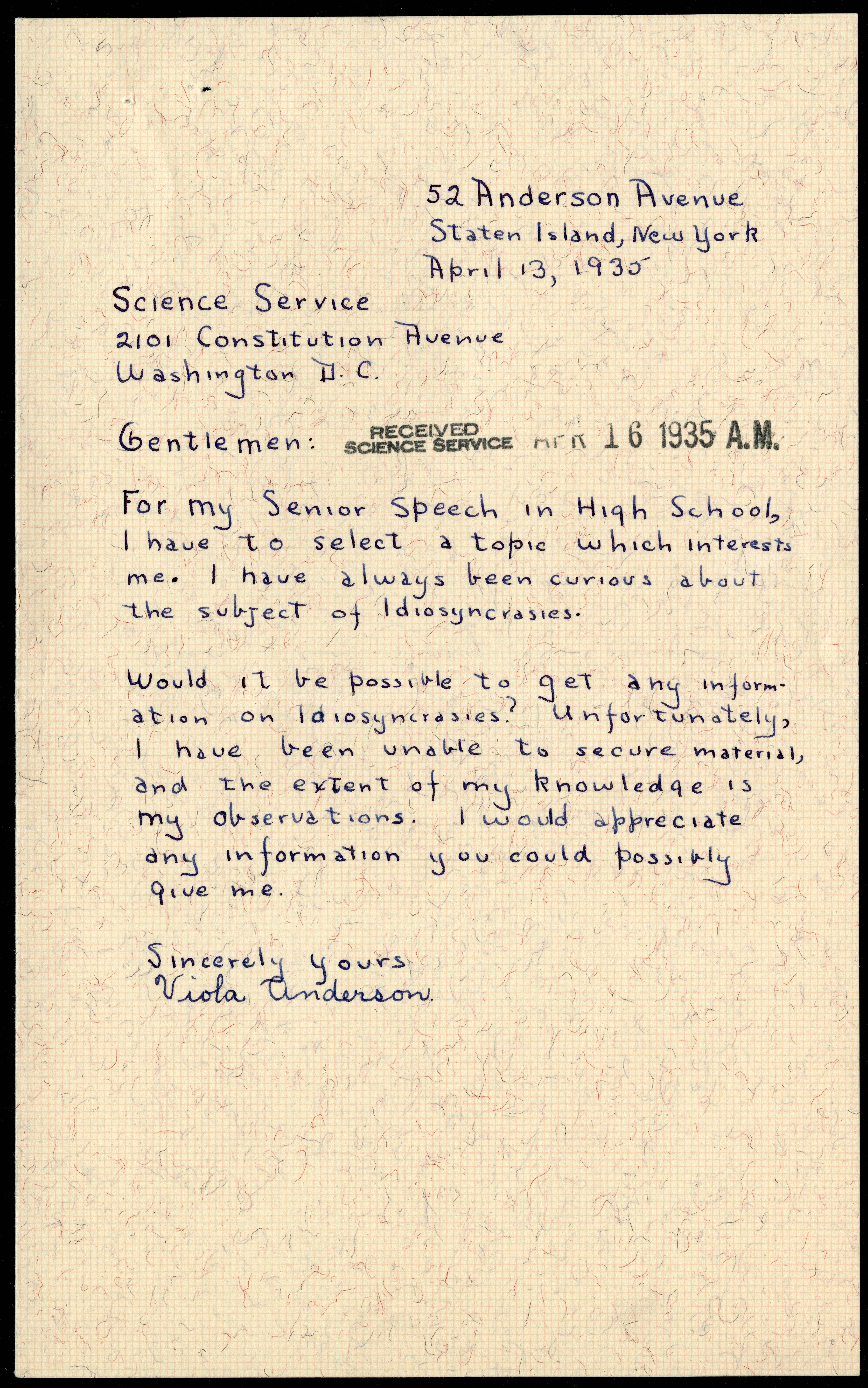
Science Service, Up Close: Idiosyncratic Discoveries
- Date: March 10, 2015
- Creator: Marcel Chotkowski LaFollette
- Description: A look at Viola Anderson and her letter to Science Service.
